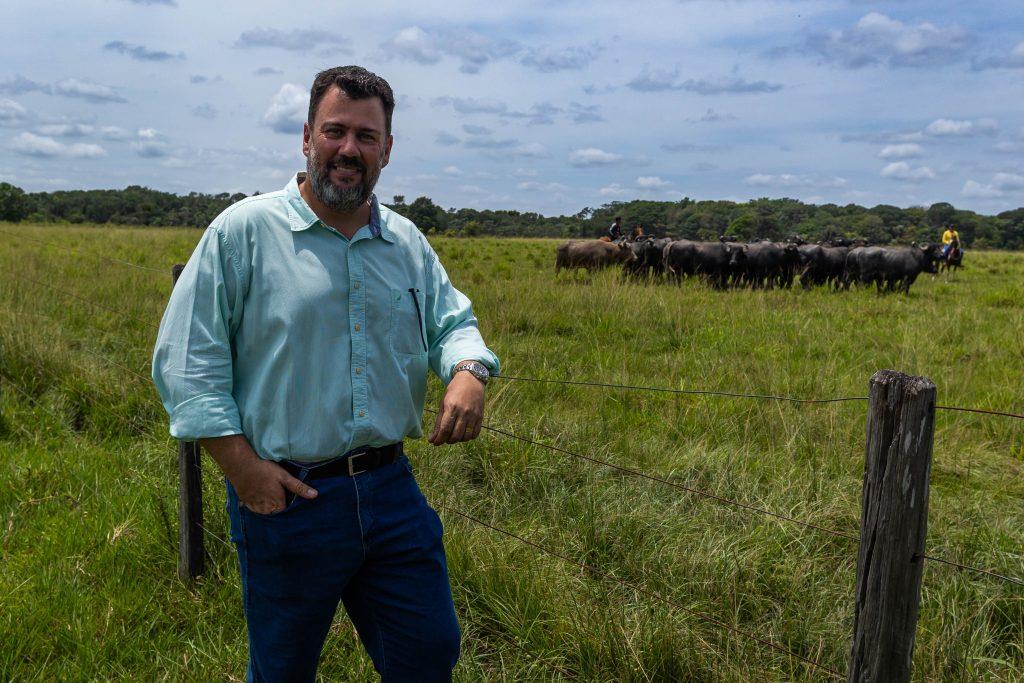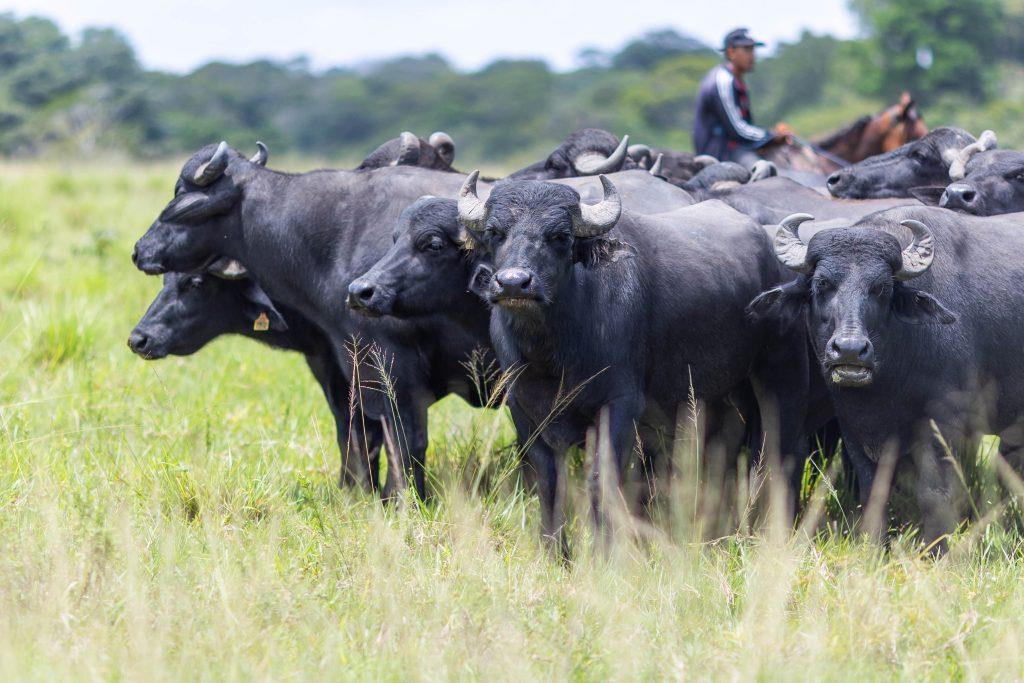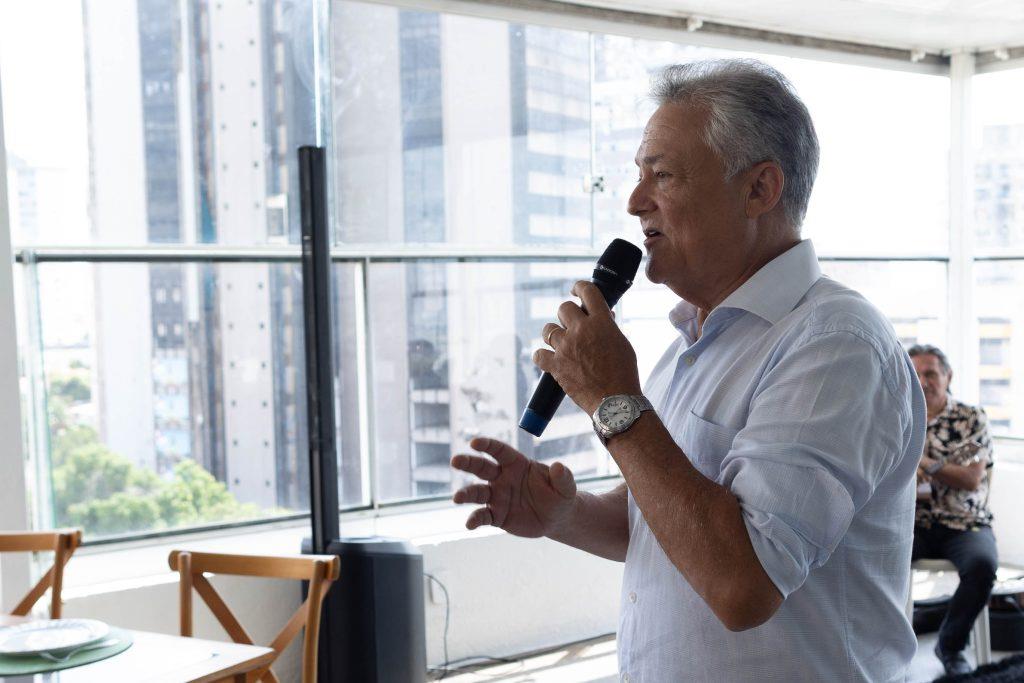
Brazil's Pará State Advances Buffalo Breeding
Aruans raises buffalo on Marajó Island and sends the best specimens of the breed there as breeders, after selection and improvement at Terê-Tauá, to enhance the quality of the entire herd.“We work with artificial insemination and monitor the development of these animals,” explained the farm's CEO and one of its owners, Daniel Araújo, to a group of journalists.

Daniel Araújo is the farm's CEO and coordinator of the Buffalo Working Group (GT Búfalo)
Daniel Araújo coordinates a multidisciplinary group in the field, the Buffalo Working Group (GT Búfalo), an initiative of the Para state agriculture federation FAEPA, which includes Embrapa Geneplus - a partnership between the Brazilian Agricultural Research Corporation (Embrapa) and the Geneplus consultancy for cattle genetic improvement. One of the members, veterinarian and professor at the Federal Rural University of the Amazon (UFRA), Bruno Cabral Soares, says the work with buffalo is an adaptation of the methodologies used with cattle.
From the selection of the best males and females within a contemporary group of animals, individuals with greater feed efficiency and reproductive performance are produced, according to Soares.“This way, we shorten the production cycle and accelerate gains in a sustainable, environmental, and economic manner for the production system,” the veterinarian explains. The environmental contribution comes, for example, from breeding buffalo that produce more meat while eating less.

Breeding operations: Between Terê-Tauá Farm and Marajó Island
On Aruans' farms on Marajó Island, the animals roam in natural fields that are flooded for part of the year-an environment unsuitable for cattle.“They've adapted to a region where cattle cannot,” says Araújo about the Marajó buffalo.“There's practically no human intervention-what we do are just boundary fences. They're raised naturally,” he adds, describing how the animals are kept on the island.
“This entire process is carried out with close attention to the land laws of our region and our state, which, I might add, I believe are the world's strictest,” says Araújo, speaking from a farm where preservation areas are clearly marked.“When it comes to preservation, I say our mantra is: to produce and to preserve. We cannot work outside this principle of harmony with nature,” the owner says.

Aruans Group has 10,000 head of buffalo
In a largely natural breeding process, intervention comes only at the end of the buffalo's life cycle, when they are sent to the Terê-Tauá farm for finishing, or fattening.“The result we get from this is a uniform carcass, a yield of over 50%, and very tender, flavorful meat that preserves the texture and taste of animals raised in the fields of Marajó,” says Araújo.
The Aruans group raises around 10,000 buffalo on its farms and sells between 2,000 and 2,500 head annually. The company does not handle slaughtering but delivers live animals to the market. According to Araújo, buffalo have already been exported live to Iraq in the Middle East through partners. The producer sees greater export potential, including for meat, as genetic improvement advances.“We need to move forward with this program to have a larger number of animals that meet market quality standards,” he says.

Nunes: Improvement could lead to exports
Currently, the buffalo herd in the state of Pará numbers 700,000 animals, according to agronomist and FAEPA consultant for United Nations COP30 climate summit affairs, Hildegardo de Figueiredo Nunes. The consultant, who has served as vice governor and secretary of agriculture of Pará, reports that most of the local buffalo production is destined for meat-around 70%-while the rest is for milk, which is used, among other purposes, to produce buffalo cheese.
Like Araújo, Nunes believes that exports could increase with the progress of the genetic improvement program.“The buffalo herd in Pará, although the largest in Brazil, is still small compared to the cattle herd. So, the yield (production) from this herd ends up being consumed locally,” he explains. He believes the project could add value to buffalo meat.“Buffalo meat has a market that can be explored, but we need to provide proof of its quality in order to place it in that market and, in doing so, encourage increased production, which is still limited,” he says.
Read the other articles in the series:
The journalist traveled at the invitation of Brazil's agribusiness lobby CNA
Translated by Guilherme Miranda
Wenderson Araujo/TriluxWenderson Araujo/TriluxWenderson Araujo/TriluxWenderson Araujo/TriluxWenderson Araujo/TriluxThe post Brazil's Pará state advances buffalo breeding appeared first on ANBA News Agency.
.jpg)
Legal Disclaimer:
MENAFN provides the
information “as is” without warranty of any kind. We do not accept
any responsibility or liability for the accuracy, content, images,
videos, licenses, completeness, legality, or reliability of the information
contained in this article. If you have any complaints or copyright
issues related to this article, kindly contact the provider above.













Comments
No comment